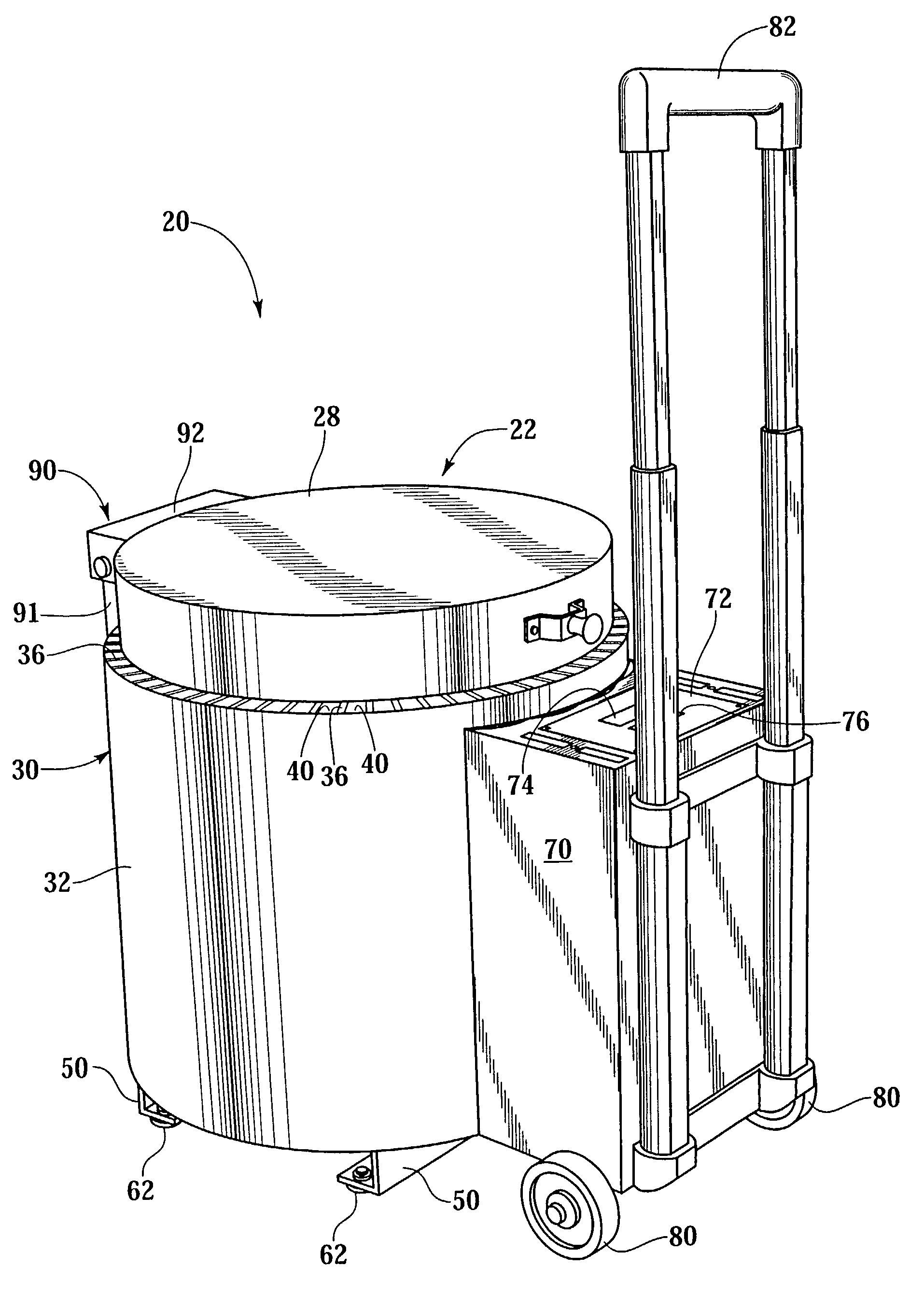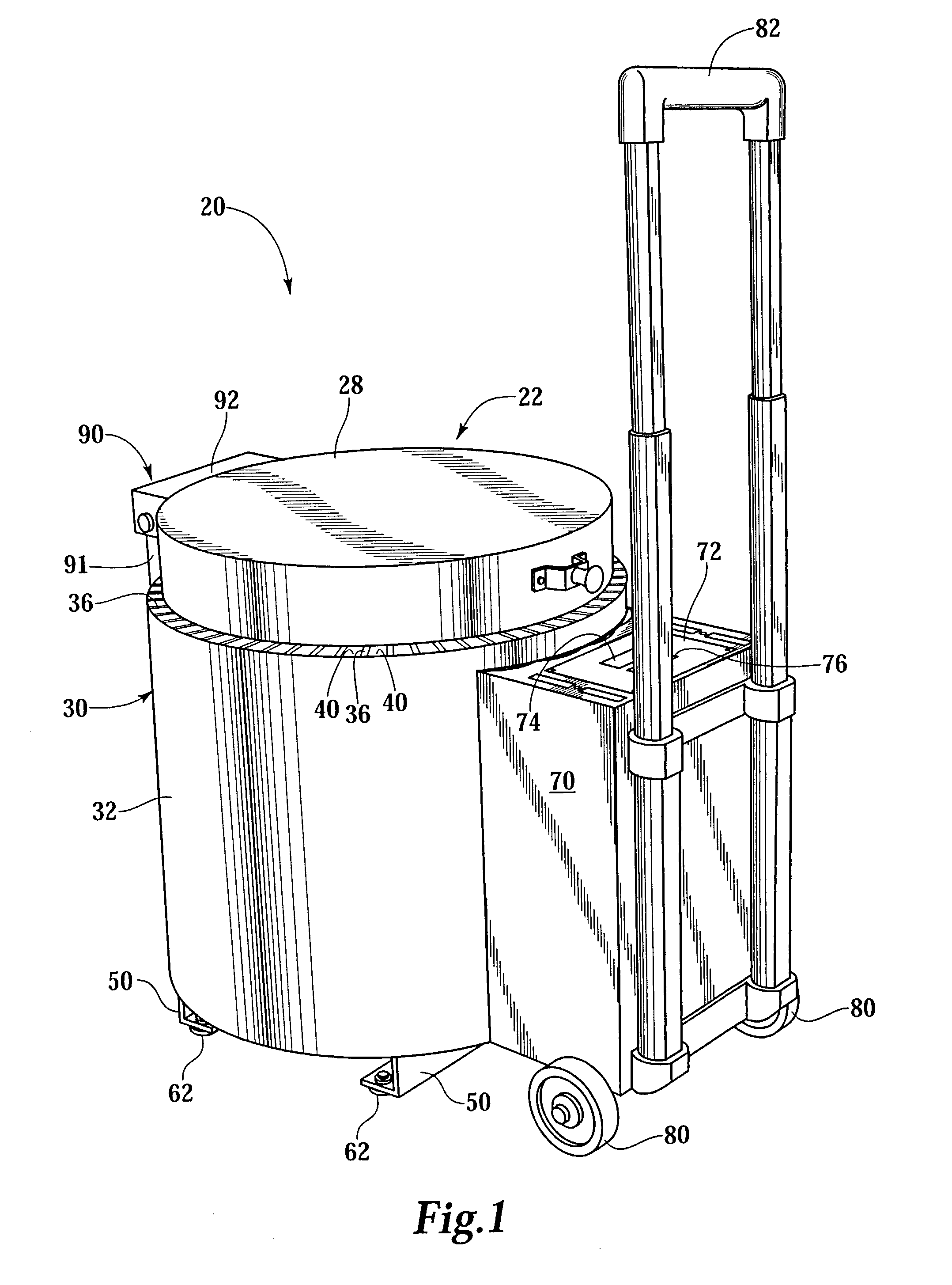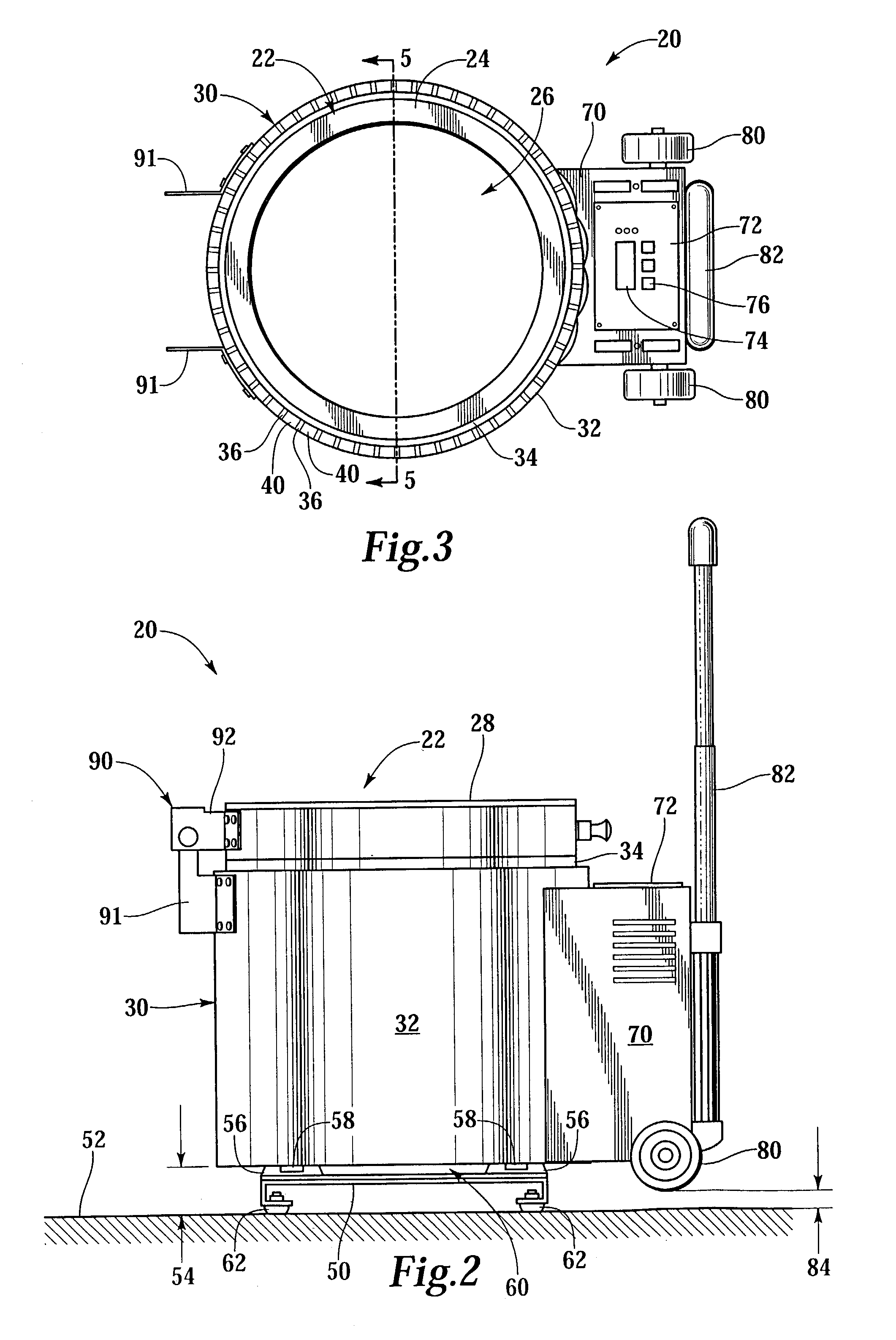Portable kiln
a kiln and portable technology, applied in the field of kilns, can solve the problems of difficult movement, heavy kiln, and inability to use outside temperatures, and it may not be desirable to leave the kiln in a useable position,
- Summary
- Abstract
- Description
- Claims
- Application Information
AI Technical Summary
Benefits of technology
Problems solved by technology
Method used
Image
Examples
Embodiment Construction
[0024]Referring now to the drawings, wherein like reference numbers are used herein to designate like elements throughout the various views, a preferred embodiment of the present invention is illustrated and described. As will be understood by one of ordinary skill in the art, the figures are not necessarily drawn to scale, and in some instances the drawings have been exaggerated and / or simplified in places for illustrative purposes only. One of ordinary skill in the art will appreciate the many applications and variations of the present invention in light of the following description of a preferred embodiment of the present invention. The preferred embodiment discussed herein is an illustrative example of the present invention and does not limit the scope of the invention to the preferred embodiment shown.
[0025]FIG. 1 is a front perspective view of the portable kiln 20, and FIG. 2 is a side view of the portable kiln 20. The kiln 20 has an oven portion 22 having an insulating sidewa...
PUM
 Login to View More
Login to View More Abstract
Description
Claims
Application Information
 Login to View More
Login to View More - R&D
- Intellectual Property
- Life Sciences
- Materials
- Tech Scout
- Unparalleled Data Quality
- Higher Quality Content
- 60% Fewer Hallucinations
Browse by: Latest US Patents, China's latest patents, Technical Efficacy Thesaurus, Application Domain, Technology Topic, Popular Technical Reports.
© 2025 PatSnap. All rights reserved.Legal|Privacy policy|Modern Slavery Act Transparency Statement|Sitemap|About US| Contact US: help@patsnap.com



